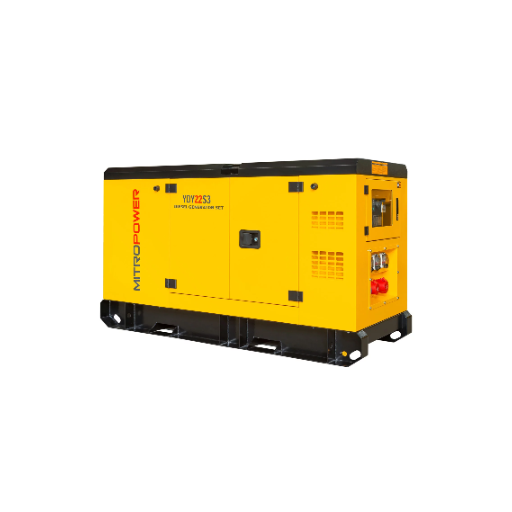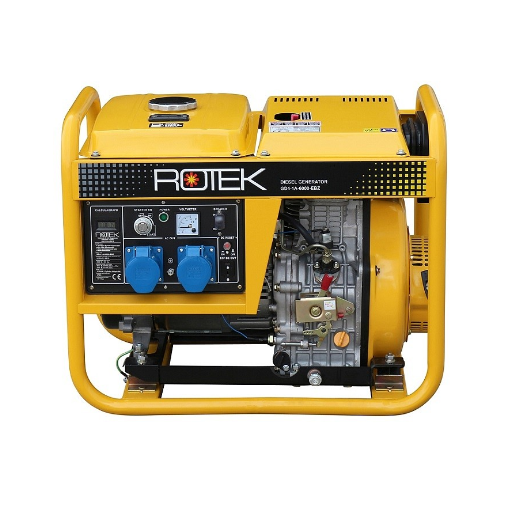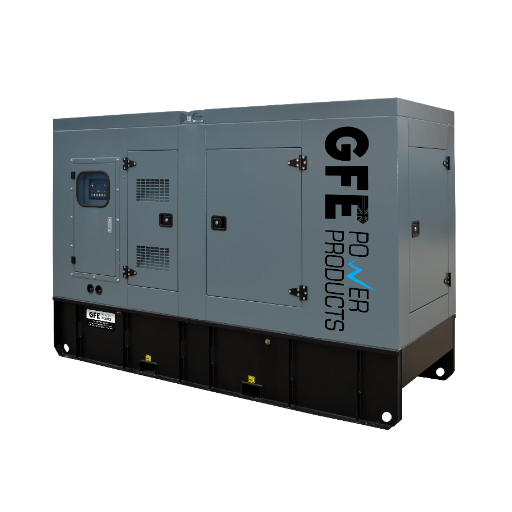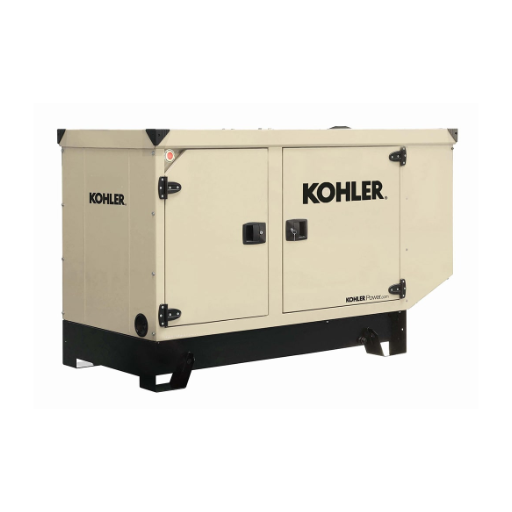What happens when a diesel generator runs out of fuel? When a diesel generator runs out of fuel while the load is applied, unexpected interruptions occur, damages are inflicted, are grievously expensive, and more operational constraints pop up. This is a prevalent situation; nevertheless, these circumstances are rarely heard of, nearly prepared for, or even counteracted during the period after. In this article, we will see why running out of fuel under load is more than just a mere nuisance: what dangers are there to your equipment, how it lowers performance, and how it lowers system reliability.
Further down, we will consider suggestions and ideas that will relieve you of this position and keep your generator fully functional when needed. This article is about understanding and working around an imperative aspect of generator maintenance, whether you are a facility manager, technician, or just a pro using diesel generators.
Immediate Effects on the Diesel Generator

Water entry into a diesel generator can have immediate harmful effects on performance and reliability. If water is in the fuel, it can cause incomplete combustion, resulting in lower power output and greater emissions. Again, if water is in the engine oil, it can affect its lubricity property, thereby leading to further wear and actual damage to internal components.
Also, electrical systems may suffer whenever moisture reaches their sensitive parts, causing short circuits or system malfunctions. Therefore, rallying against water entry is the first thing to do to save the generator’s operational integrity before the exorbitant repair bills.
What Happens When a Generator Runs Out of Fuel
If a generator runs out of fuel, it simply ceases power output immediately because the engine is no longer supplied with the necessary fuel to work. The sudden shutdown can cause damage, especially where the generators are not designed to automatically shut down on low fuel.
For instance, air may be drawn into the fuel system, rendering the generator very difficult to restart, with the fuel lines having to be bled. In addition, a loss of power may be harmful to the electrical systems that have been connected, damaging sensitive equipment or causing data loss on devices that are not well backed up by power solutions.
Ensuring that fuel levels are checked regularly and that the fuel is replenished before depletion will help avert these problems, guaranteeing that the generator operates continuously and reliably.
Impact on the Diesel Engine Performance
Diesel engine performance is significantly compromised whenever the diesel generator is run with low fuel. Air might enter the fuel system whenever the fuel is low, causing misfiring or an outright engine stop. Ultimately, this situation increases wear and tear on war-related engine parts and maintenance costs.
Meanwhile, if the generator is forced to work longer under such conditions, the fuel injection system gradually becomes impaired, affecting the generation process and the engine’s output. Air pockets not only cause inconsistent performance but also power surges and drops, which eventually rub off on the connected machinery or equipment. Preventive measures to safeguard good engine performance and longevity include keeping the fuel level at the right mark and periodic inspections.
Effects on Connected Loads
These air pockets and the random engine performance can cause devastating effects on loads on the other side. If the unsteady output from the engine is caused by irregular combustion, then the generators could experience voltage and frequency instability. According to some recent studies, frequency deviations as low as 5 percent can lead to the overheating and premature wear of sensitive equipment such as motors, compressors, and electronic devices. These effects become more pronounced during overloading conditions, forcing connected machinery to work inefficiently or fail.
Manufacturing and power plants are most at risk as they heavily rely on synchronized machines. Frequent power surges may induce mechanical stress to the point of reducing the lifespan of bearings or rotors in motors by 30% to 50%. To minimize the impact on connected equipment, it is increasingly recommended to adopt preventive measures, such as the installation of dynamic load balancing systems or surge protectors, coupled with early fault detection.
Investment in such protection measures will prevent exorbitant repair expenses and allow for seamless workflow execution and operational consistency, especially in critical industrial applications.
Potential Damage to Generator Components

Generator damage to key components from various causes may involve electrical overloads, poor maintenance, or adverse environmental conditions. These are the most commonly occurring problems:
- Rotor and stator winding damages: Overheating or insulation failure may cause short circuits or even reduced efficiency.
- Bearing wear: improper lubrication or misalignment may cause intolerable wear, leading to operational failure.
- Voltage regulation problems: sudden changes in loads or ageing of components may create inconsistency in voltage output.
- Cooling system failures: blockage or fault in the cooling system may cause overheating and degeneration of crucial components.
Proper maintenance or monitoring will immediately identify these risks, ensuring reliable generator performance and reducing expensive downtime.
Risks to the Diesel Engine
Diesel engines are the most powerful and fuel-efficient, but they are exposed to specific hazards detrimental to their functioning. Common problems arise through contamination by particles, water, or microbes that go on to clog injectors, thereby impairing and reducing efficiency. Lack of or irregular maintenance often leads to overtime carbon deposition, further deterioration in performance, and eventual damage to engine parts.
Poor lubrication or the use of inferior oil may also cause premature wear to such essential components as pistons and cylinders. Overloaded engines beyond their rated capacity will also tend to overheat; wear is accelerated, and complete failure is imminent. These risks can be mitigated through appropriate fuel handling, maintenance of regular service, and maintenance of operations within specified guidelines to ensure longevity and serviceability of the engine.
Damage to the Fuel System
Damage to the fuel system greatly affects engine performance and efficiency. Fuel contamination, clogging of fuel filters, and wear of injected parts such as fuel injectors, filters, and pumps are the chief impairments of fuel systems. When particulates or water find their way into fuel, system performance will drop by as much as 50%, with fuel economy decreasing and an increasing chance of breakdowns occurring. The contaminants enter through poor-quality fuel, inadequate fuel filtration, or condensation formation in the fuel tank.
Diesel fuel contamination is the most common and grave concern, accompanied by microbial growth, also called the “diesel bug,” which could clog filters and corrode internal parts. A report from 2022 stated that water contamination in fuel or the use of very low-quality fuel accounts for almost 90% of the failures of fuel injection pumps.
To avoid such damage, always ensure that clean, high-grade fuel is used and that a strict service schedule is maintained, including changing the filters as the manufacturer recommends. Engines today with high-pressure fuel systems are especially sensitive to even trace amounts of foreign matter or impurity. Any deterioration in the fuel system leads to a power drop, an increase in emissions, and hefty repair charges, emphasizing the importance of preventive measures in maintaining operational reliability.
Impact on Electrical Components
Since electrical systems have become so intertwined with a car’s performance and safety, they must be complex. Contamination of the fuel system or insufficient maintenance indirectly affects the electrical components by subjecting sensors and control modules to undue strain. Sensors that are at fault or unreliable, for example, for sensing oxygen or pressure in fuel, may be returning compromised signals to the engine control unit (ECU). The ECU then makes incorrect adjustments, lowering efficiency or generating system errors. Regular diagnostic checks and following scheduled services all help mitigate risk, guaranteeing excellent performance from the electrical components over time.
Steps to Safely Restart the Diesel Generator

- Inspect the Generator
Perform a visual inspection for obvious damages, leakage, or loose parts on the generator. Check that all components are secured and that there are no obstructions around it.
- Check Fuel and Oil Levels
Make sure that the generator has enough fuel and that the oil level is within the acceptable range. Top up or change as necessary.
- Check the Battery
Ensure all cables are correctly connected to the battery and keep it charged. Tighten loose connections and clean terminal clamps if required.
- Reset the Circuit Breaker
If tripped, reset the circuit breaker to its normal position before restarting the generator.
- Turn Off Load Connections
Turn off or disconnect any device or load the generator is currently powering during the restart.
- Start the Generator
Turn the key to activate the generator or press the start button. If it does not start immediately, wait a few seconds to avoid damaging the starter motor and try again.
- Reconnect the Load
Once the generator works well, slowly reconnect the load or turn on connected devices as required.
- Monitor Performance
Watch the generator for a few minutes to ensure it operates without strange noise, vibration, or error indications. Adjust accordingly.
Assessing the Situation Post-Outage
After the power was restored, steps needed to be taken to confirm that everything functioned well and to mitigate the risk of recurrent problems. Examine all electrical systems and appliances for any visible damage or malfunction since the outage. Critical systems such as heating, cooling, or refrigeration should all be checked to ensure they operate. Ensure you have also reset all affected timers or clocks that may have stopped due to the loss of power.
Another good practice is to check what could have caused the problem. Was it the weather? Equipment? Or perhaps an issue with the power grid? Having this information can help take preventive actions. If the outage exposed weak points in your backup power arrangements, such as insufficient fuel for the generator or insufficient battery storage, then consider upgrading those so you’ll be in better shape next time. This would thereby contribute to your preparedness against future incidents.
Refueling Procedures
Refueling must be done correctly to safely and efficiently operate the backup generator and other fuel-powered equipment. First, inspect the fuel level using the equipment gauge or dipstick. Ensure to use only the fuel specified by the manufacturer for that purpose. Always turn off the generator and let it cool before refueling to avoid any fire risk or an accident. Wear gloves and goggles as safety precautions, and keep an extinguisher close just in case.
The fuel must be poured slowly to prevent spilling, and always ensure that the fuel cap is fastened tightly. Lastly, the fuel should be stored in approved and marked containers in a spacious, ventilated area. These steps help ensure that the equipment is steady and ready for use.
Restarting the Generator Safely
Before starting the generator, it should be set 20 feet away from doors, windows, and vents in a well-ventilated outdoor area to avoid carbon monoxide poisoning. According to the U.S. Consumer Product Safety Commission (CPSC), misuse of portable generators causes over 70 deaths every year from CO poisoning. Make sure there is nothing surrounding the generator that may cause it to tip over, and keep it on stable and level ground so it will not be damaged during operation.
Check the generator for any visible faults like frayed wiring, loose connections, and the like, and take action before using the generator. Also, check the oil and fuel levels and make sure that each is within the recommended specifications of the manual. If you recently added fuel, allow the unit to sit for at least 5 to 10 minutes so a complete evaporation of fumes from any spilled fuel is achieved, thereby reducing the possibility of fire when starting.
When starting your generator, always follow the manufacturer’s step-by-step instructions for your particular model. Typically, this may include turning off any loads connected to the portable generator, switching the fuel valve to the “On” position, setting the choke as required, and finally pulling the starter cord or activating the electric start. Once the generator runs, re-apply electrical loads in measured increments to avoid overload.
During operation, always monitor the generator’s output and temperature. A carbon monoxide detector near the generator will add a layer of security since carbon monoxide has no smell and is deadly. Always refer to your generator manual for instructions on maintenance and operation so that your generator offers the very best performance.
Tips for Preventing Fuel Outages in the Future

- Create a Fuel Reserve: An adequate amount of fuel should be kept in approved, safe containers so backup is available in an emergency. Be mindful of the storage guidelines and expiration dates.
- Monitor Fuel Usage Regularly: Check or monitor the fuel levels in your generator very often during operation so that you will not be caught off guard by depletion.
- Prepare for High Consumption: For sudden longer periods of use, compute fuel consumption and set aside enough fuel beforehand.
- Refuel at the Right Time and Safely: When refueling, never try it while the generator is still running; always do it only after it has been switched off and cooled down. This will always prevent mishaps like spillages or, even worse, fires.
- Plan Refueling Periods: Plan your operational periods to include refueling intervals to reduce downtime and incidents of running out of fuel.
- Use a Fuel Stabilizer: When storing fuel for prolonged periods, use a fuel stabilizer to prevent fuel degradation.
Keep Track of Local Supply: This will continuously give you pertinent information about fuel supply in your vicinity, especially just a day or two before any anticipated severe weather or outages.
Regular Fuel Level Monitoring
Monitoring fuel levels regularly is essential to keep operations running smoothly and avoid untimely shutdowns. Modern monitoring solutions, such as fuel-level sensors and fuel-management systems, provide instant data about storage so that proactive actions can be taken. The latest IP-based monitoring technologies offer remote access to check fuel levels through a smartphone app or computer dashboard with great comfort and accuracy. These systems collect data that can establish consumption patterns for better forecasting of fuel needs.
It has been established that a company could reduce about 20% of fuel wastage by simply combining proper fuel-level monitoring with the study of usage trends. Automated alerts for low fuel levels can also be set up to reduce the risk of running out of fuel and thus experiencing operational delays or standby failures. These are particularly helpful during scenarios such as extreme weather events or supply chain disruptions when access to fuel must be a priority.
Implementing Fuel Management Strategies
Strategic fuel management ensures that resources can be better utilized and operational costs cut. Five such workable strategies for better fuel management are expounded upon below:
- Fuel Level Monitoring Systems
These advanced systems should monitor tank levels in real time. They can provide different options for accurate data to forecast refueling needs and thus avoid wastage or an emergency caused by sudden shortages. According to data, fuel wastage has been cut by 15% through such systems.
- Usage Trend Analysis
Monitor fuel consumption trends over time to account for inefficiency and lack of patterns. This will allow organizations to take data-driven actions to optimize their equipment and scheduling. Studies show that organizations that practice trend analysis save about 10% annually in fuel costs.
- Automated Alert Conditions
Set up automated alerts for critical situations like low fuel or abnormal consumption patterns. Computerized alerts will secure your proactive refueling scheduling and alert you to suspicious actions like attempts to tamper with or leak fuel. This will limit downtime and ensure better operational efficiency.
- Preventive Maintenance Scheduling
Fuel Storage Tanks and Equipment should be regularly maintained on a preventive maintenance schedule to prevent performance degradation. Preventive maintenance reduces the likelihood of leaks, contamination, or equipment failure. Data also suggests that well-maintained tanks increase fuel utilization efficiency by 20%.
- Delivery Route Optimization
Optimize the delivery routes to minimize total mileage through software. This reduces fuel consumption and greenhouse gas emissions. Since adopting route optimization technologies, logistics companies have claimed a steady 12% savings on fuel costs.
Applying these strategies will help organizations become more fuel-efficient, more secure in their supply chains, and make long-term cost savings. Fuel management today consists of data-based and tech-driven practices.
Choosing the Right Diesel Generator for Continuous Use
Choosing the right diesel generator for continuous use entails considering power needs, run time, fuel efficiency, noise, durability, and maintenance requirements.
| Parameter | Key Consideration |
|---|---|
|
Power |
Match the load demand |
|
Runtime |
Long fuel capacity |
|
Efficiency |
High fuel efficiency |
|
Noise |
Low noise levels |
|
Durability |
Robust build quality |
|
Maintenance |
Easy service access |
Reference Sources
- Title: Effects of Low Charge and Environmental Conditions on Diesel Generators Operation
- Authors: M. Issa et al.
- Publication Date: 2020-10-21
- Journal: Engineering
- Citation Token: (Issa et al., 2020, pp. 137–152)
- Summary: This paper discusses the operational challenges diesel generators face, particularly in remote areas. It highlights that running a diesel generator at low charge can lead to condensation of combustion residues, which increases friction, reduces efficiency, and increases fuel consumption. The study emphasizes the importance of maintaining optimal operational conditions to prevent these issues.
- Methodology: The authors conducted a literature review and analyzed existing data on diesel generator performance under various environmental conditions, focusing on the impacts of low load and operational practices.
- Title: Optimization of Consumption of Primary Fuel in Local Electricity Systems Using Diesel Generators
- Authors: S. Denysiuk et al.
- Publication Date: 2022-10-12
- Journal: 2022 IEEE 8th International Conference on Energy Smart Systems (ESS)
- Citation Token: (Denysiuk et al., 2022, pp. 112–115)
- Summary: This study presents an algorithm for optimizing generator power distribution to minimize fuel consumption while ensuring a reliable power supply. It discusses the implications of running out of fuel and the need for effective management strategies to prevent such occurrences.
- Methodology: The authors developed an algorithm to calculate optimal power distribution among multiple generators, focusing on minimizing fuel consumption while meeting load demands.
- Title: Smart Fuel Monitoring System For Diesel Generator
- Authors: Duvvuri Tatababu et al.
- Publication Date: 2024-07-18
- Journal: 2024 International Conference on Computational Intelligence for Green and Sustainable Technologies (ICCIGST)
- Citation Token: (Tatababu et al., 2024, pp. 1–6)
- Summary: This paper presents a smart monitoring system designed to track fuel levels in diesel generators. The system addresses issues such as fuel theft and low fuel levels that could lead to generator failure. It aims to provide real-time data to prevent fuel shortages.
- Methodology: The authors designed a system using flow-level sensors and GSM technology to monitor fuel levels and send alerts when they are low, ensuring timely refueling.
Frequently Asked Questions (FAQs)
What happens when a diesel generator runs out of fuel?
When a diesel generator runs out of fuel, it will stop operating, leading to a complete loss of power supply. This can cause disruption, especially during a power outage. Additionally, running out of fuel can introduce air into the fuel system, creating complications when trying to restart the engine.
What do I need to do if my diesel generator runs dry?
If your diesel generator runs dry, you must refuel it as soon as possible. After refueling, it’s essential to bleed the fuel system to remove any air that may have entered. This process involves opening the bleed screw on the fuel pump until a steady stream of fuel flows out, ensuring no air remains in the system before attempting to restart the engine.
How can I check the fuel gauge on my generator?
To check the fuel gauge on your generator, locate the fuel gauge indicator on the control panel. Most generators will have a visual display showing the fuel level in the tank. Regularly monitoring the fuel gauge can help prevent running out of fuel and ensure continuous generator operation.
What are the consequences of running a diesel generator without proper fuel?
Running a diesel generator without proper fuel can cause several problems, including damaging the engine and leading to engine failure. Insufficient fuel can also affect the generator’s load, causing it to run inefficiently and potentially overheat.
How does air entering the fuel system affect my generator?
Air entering the fuel system can disrupt the fuel flow from the tank to the engine, preventing the generator from operating correctly. This can result in poor performance, stalling, or failure to restart. Properly bleeding the fuel system after a generator runs out of fuel is crucial in preventing these issues.
What should I do during troubleshooting if my generator won’t start?
During troubleshooting, if your generator won’t start after running out of fuel, check the fuel level and ensure the tank is filled. Then, bleed the fuel system to remove any air. Additionally, inspect the fuel pump and other engine parts for any potential issues preventing ignition.
How often should I perform regular maintenance on my diesel generator?
Regular maintenance on your diesel generator should be performed at least once a year or according to the manufacturer’s recommendations. This includes checking the fuel system, changing the oil, inspecting filters, and ensuring all components are functioning properly to avoid issues like unexpectedly running out of gas.
Can running a diesel generator under heavy loads affect its fuel consumption?
Running a diesel generator under heavy loads can significantly affect fuel consumption. The generator will require much fuel to maintain the required power output, which can lead to quicker fuel tank depletion. Monitoring the load and fuel levels can help manage efficiency and performance.
